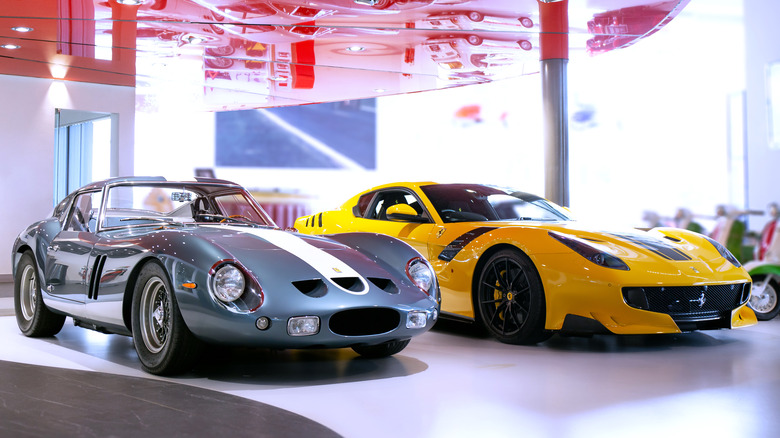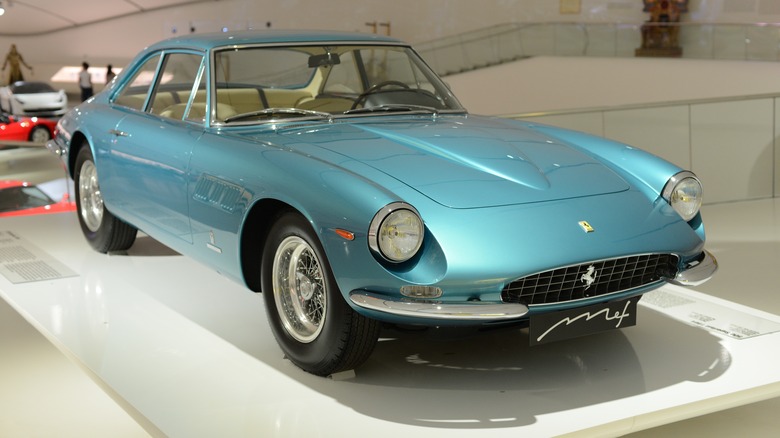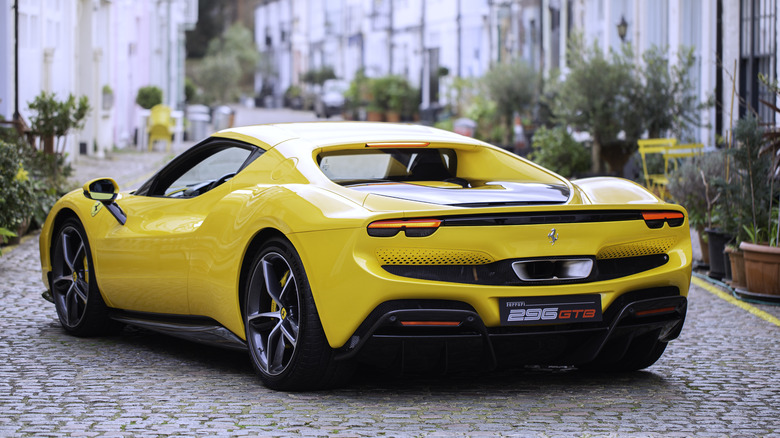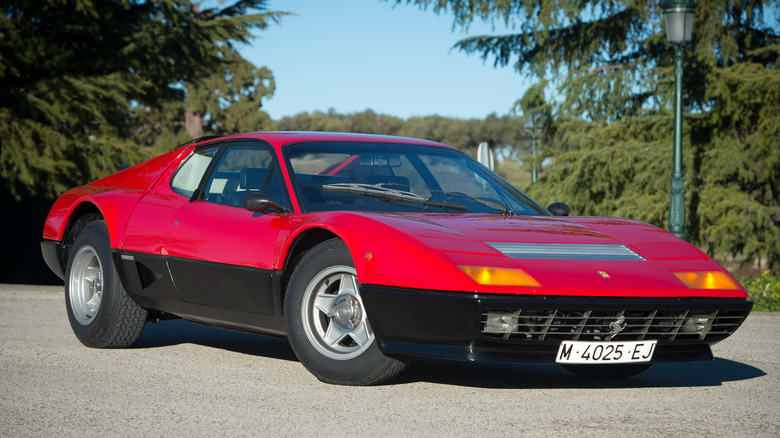Ferrari's Strange Car-Naming System Explained
What's in a name? Rather a lot, if you ask Ferrari. Its cars almost always carry a simple, three-digit title referring to the specification of the engine. Some models gain an extra suffix to describe their shape or the length of their wheelbase, and others are blessed with the name of a place — California, Monza, Portofino — or even a person; Scaglietti, Dino, Enzo.
The three digit-moniker that relates to a Ferrari's engine specification is perhaps not a surprise, given how a its engines never fail to dominate the driving experience.
The naming convention's history begins in 1947 with the Ferrari 125 S — perhaps one of the best Ferraris of all time. This car got its name by rounding up the 124.73 mm cubic capacity of each of its 12 cylinders, as stated on Ferrari's website. This naming method was used for over 20 road and race cars over the next five years. Rounding up (or down) was occasionally adjusted to help new vehicles fit into existing model lines. As such, the Ferrari 375 Formula One racer of 1950 had a cylinder capacity of 374.47 mm, while the closely related 375 Indianapolis from 1952 retained the name but had a capacity of 365.17 mm.
With names, it helps to be Italian
By the mid-'50s, Ferrari started adding evocative suffixes like Monza, Europa and LM, for Le Mans. Perhaps the most evocative Ferrari suffix of all (or childish, depending on your point of view) is Superfast. Following the name the 410 in 1956, the 500 in 1964 and 812 of 2017, Superfast is reserved for front-engined grand tourers with lots of power.
Although numerical names are most common, Ferrari certainly benefits from being Italian when it comes to making simple words sound exotic. The 500 TR of 1956 was the first to refer to its red painted cylinder head as Testa Rossa, "redhead." The name appeared again in the 250 Testa Rossa racer of 1958 and Testarossa supercar of 1984.
Ferrari also leaned into its native tongue with the 250 GT Lusso ("luxury") of 1962, the 550 Barchetta ("little boat") from 2000, the Challenge Stradale ("road") of 2003 and the 430 Scuderia ("team") from 2007. Then came the 458 Speciale (no translation required) in 2013 and a convertible version, called the 458 Special A, where the A stood for Aperta ("open"), a year later.
Other Italian model names are obscured by acronyms, as with 1962's Ferrari 250 GTO, which stands for "Gran Turismo Omologato" and essentially means a racing car homologated for competing in the GT or "Grand Touring" category. GT appears frequently in Ferrari names, always standing for Gran Turismo and often followed by a B for Berlinetta ("little saloon") or S for "sport".
Spider or Spyder?
Some Ferrari acronyms don't use Italian at all, such as SWB (short wheelbase) and LWB (long wheelbase). These were used most famously by the 250 GT SWB of 1959 and the long and short versions of the related 250 California Spyder from 1957.
Or is it Spider? Ferrari switched from former to latter, while Porsche still uses Spyder and both McLaren and Fiat use Spider. Both words have their origins in the spindly wheel spokes of horse-drawn carriages from the 1800s. Spider was later used for sportier, open-top vehicles and the name has stuck ever since.
But there are also the place names. The 250 GT California arrived when U.S. Ferrari importer and personal friend of Enzo Ferrari, Luigi Chinetti, encouraged the company to produce a car for his market. The U.S. state was used again for the California and California T (for turbo) in 2008 and 2014.
Reminding us where it is headquartered, Ferrari used the name of its hometown for the 550 Maranello in 1996, then its home province for the 360 Modena in 1999 and its own test track for the 599 GTB Fiorano in 2006. Leaving no doubt as to the car's birthplace, we later saw the 458 Italia in 2009. The F40 celebrated a 40th birthday in 1987, and the F50 celebrated Ferrari's 50th, albeit two years early to meet US emission laws. The tautologous Ferrari LaFerrari arrived in 2013, having been codenamed F150 during development — a name it coincidentally shared with Ford's best-selling pick-up truck.
The Ferraris named after people
Lastly, there are Ferraris named after people. These include several models of Dino road and race car, named after Enzo's late son Alfredino who worked on V6 engines, and the 612 Scaglietti of 2004, which honored the designer and coach builder Sergio Scaglietti. Lastly, of course, is the Enzo Ferrari from 2002. A one-off called the SP38 Deborah was built in 2007 and named after the customer who commissioned it.
Lesser known is how the 365 GT4 BB, christened Berlinetta Boxer by Ferrari, was allegedly named after something else — or rather, someone else altogether. Engineer Leonardo Fioravanti told The Road Rat magazine, "Angelo Bellei, Sergio Scaglietti and I were responsible for that car, the BB. We all had the same thought when it first arrived as a one-to-one scale model, the very first prototype, 'Wow ... It's very good. It's beautiful. Very ... shapely ...' Of course, we were all thinking of Brigitte Bardot."
Today's Ferrari range and names are more varied than ever. There's the F8 Tributo (a tribute to Ferrari's V8 engines), the 296 (a 2.9-liter V6), the 812 (an almost 800 horsepower V12) and the SF90 (celebrating the 90th anniversary of the Scuderia Ferrari racing team). There's also the Roma and Portofino M (for Modificata), and lastly the Purosangue, or 'thoroughbred', Ferrari's first SUV.



